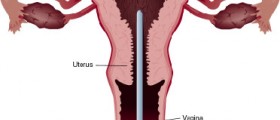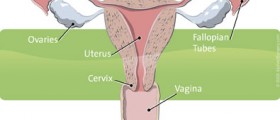
Endometrial hyperplasia is a medical term that refers to excessive thickening of the endometrial lining. Normally, the endometrium thickens each month at some point during menstrual cycle and prepares the uterus for implantation. In case implantation of the fertilized egg does not take place, the excess of uterus lining sheds and this shedding is actually a monthly bleeding. However, sometimes the lining remains thick and then we are talking about endometrial hyperplasia.
The menstrual cycle is under control of two female hormones, estrogen and progesterone. If the two are well-balanced, all the processes regarding menstrual cycle occur normally. Still, imbalance of the relationship between estrogen and progesterone is associated with many problems, one of which is endometrial hyperplasia.
Endometrial Hyperplasia Symptoms and Signs
In the majority of cases endometrial hyperplasia is actually quite a benign condition and is even considered normal for women who are close to entering menopause. This issue can also affect women who are already suffering from other conditions such as diabetes, obesity or polycystic ovary syndrome.
Women who are suffering from abnormal vaginal bleeding, bleeding or spotting between menstrual periods, those with noticeable changes in the duration of menstrual periods and heavy menstrual blood flow may be experiencing the mentioned due to the presence of endometrial hyperplasia. However, all the mentioned symptoms and signs may be also caused by some other gynecological disorders.
Endometrial Hyperplasia Classification
In women with endometrial hyperplasia the endometrium reacts to the growth-promoting actions of estrogen. Still, hyperplastic cells may after certain period of time additionally undergo precancerous changes and eventually even turn into actual cancer cells. This is essential when determining the type of endometrial hyperplasia and choosing treatment.
There are several types of endometrial hyperplasia based on pathohistological characteristics of hyperplastic endometrial cells.
Simplex or complex endometrial hyperplasia develops in a form of endometrial irregularity and cystic expansion of glands or crowding/budding of these glands. Fortunately, there are no precancerous changes and it is estimated that patients suffering from this type of endometrial hyperplasia basically never end up with endometrial carcinoma.
Atypical endometrial hyperplasia (again simplex or complex), on the other hand, is characterized by different architectural changes with accompanying atypical changes in gland cells which make these cells precancerous. This means that such cells may eventually transform into an actual endometrial cancer.
Endometrial Hyperplasia Diagnosis and Treatment
Conformation of the condition is achieved after pathohistological examination of samples of the uterus lining taken from thickened parts of the uterus. Treatment in many cases includes hormonal therapy or sometimes surgery (complete removal of the uterus).

















Your thoughts on this
Loading...